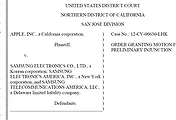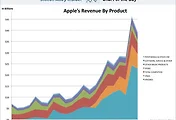Washington DC - The "25% Rule" has often been used by damages experts in assessing damages in patent infringement cases. The rule states that in determining a base royalty rate in a hypothetical negotiation, a starting point is to consider that a reasonably royalty would be 25% of the marginal profits that would be realized by using the patented improvement. USE OF THE 25 PER CENT RULE IN VALUING IP, 37 les Nouvelles 123, 123 (Dec. 2002). On January 4, 2011, the Court of Appeals for the Federal Circuit resoundingly rejected this theory in Uniloc USA v. Microsoft. The Court stated:
"This court now holds as a matter of Federal Circuit law that the 25 percent rule of thumb is a fundamentally flawed tool for determining a baseline royalty rate in a hypothetical negotiation. Evidence relying on the 25 percent rule of thumb is thus inadmissible under Daubert and the Federal Rules of Evidence, because it fails to tie a reasonable royalty base to the facts of the case at issue."
This has been a much-anticipated case, because the jury had awarded Uniloc damages of $388 million - a huge amount by any measure.
Practice Note: Although this case did not originate in Indiana, appeals in all patent infringement litigation are made to the Court of Appeals for the Federal Circuit. Thus, this ruling impacts patent infringement cases in every State, including Indiana.
This opinon is also notable because it comments on other important subjects in patent law, such as:
The Entire Market Value Rule - "The entire market value rule allows a patentee to assess damages based on the entire market value of the accused product only where the patented feature creates the 'basis for customer demand' or 'substantially create[s] the value of the component parts. . . This case provides a good example of the danger of admitting consideration of the entire market value of the accused where the patented component does not create the basis for customer demand."
Standard of Review of Jury Verdicts The Court ruled that de novo review applies in cases where "the parties conceded that under one claim construction there was infringement and under the other there was none, and were arguing only over which claim construction was appropriate." In contrast, if "the claim construction itself is not contested, but the application of that claim construction to the accused device is," the substantial evidence standard governs
Willful Infringement. A court can "treble" damages and award attorneys fees when "willful infringement" occurred. The Court stated, "If the accused infringer's position is susceptible to a reasonable conclusion of no infringement, the first prong of Seagate cannot be met." Slip Op. at 32. Particularly obtuse is the court's triple-negative articulation of the factual holding: "Uniloc has not presented any evidence at trial or on appeal showing why Microsoft, at the time it began infringement, could not have reasonably determined that [Microsoft's algorithms] did not meet the "licensee unique ID generating means," "licensee unique ID," or "registration system"/"mode switching means" limitations."
Clear and Convincing Standard for Proving Patent Invalidity. Microsoft had vigorously argued that patent invalidity need only be shown by a preponderance of the evidence as opposed to clear and convincing evidence . However, the Court did not rule in Microsoft's favor, stating, "Until changed by the Supreme Court or this court sitting en ban, this is still the law."
Given the amount of damages at issue, the case is likely to be appealed to the U.S. Supreme Court.
The opinion appears below

